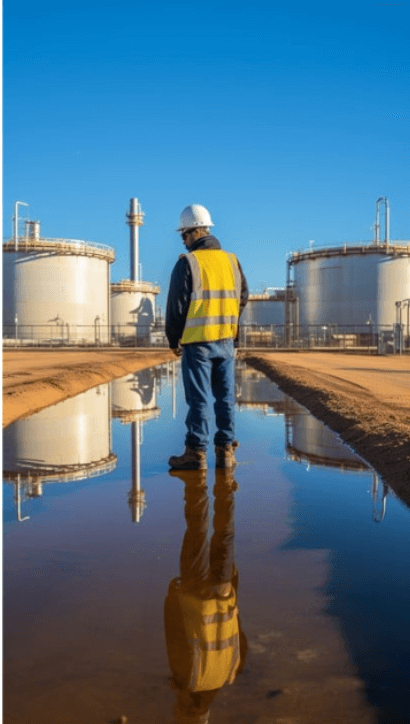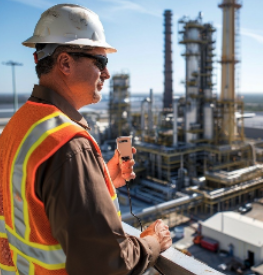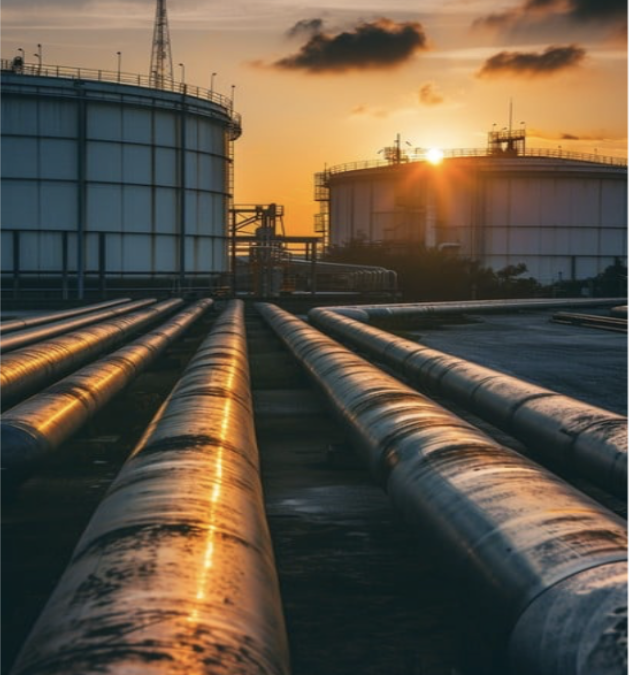Conduct Regular Inspections and Maintenance
Why it matters
Routine checks of infrastructure—such as drains, structural supports, and utility lines—prevent small issues from becoming safety hazards. For example, a
clogged drain can cause flooding, creating slip risks, while a weakened support could
lead to structural failure.
Best practices
- Schedule regular inspections of critical systems (e.g., HVAC, electrical, plumbing).
- Perform preventive maintenance tasks like clearing drains, replacing worn supports, or trenching for secure utility lines.
- Document findings and address issues promptly to avoid escalation.
- Use predictive maintenance tools (e.g., sensors) to monitor equipment health in real time.
Impact
Reduces risks of accidents and costly downtime. According to OSHA, proactive
maintenance can reduce workplace injuries by up to 30%.

Implement a Robust Safety Training Program
Why it matters
Well-trained employees are less likely to make errors that lead to
accidents, especially when handling routine tasks like repairs or installations.
Best practices
- Train staff on proper equipment use, hazard recognition, and emergency
procedures. - Provide specific training for tasks like trenching (e.g., safe digging practices to
avoid utility strikes). - Conduct regular refresher courses and toolbox talks to reinforce safety protocols.
- Ensure workers understand OSHA regulations and facility-specific safety
policies.
Impact
Facilities with comprehensive training programs report 20-50% fewer incidents, per the National Safety Council.
Maintain Clear and Safe Workspaces
Why it matters
Cluttered or poorly maintained workspaces increase risks of trips, falls, and equipment malfunctions.
Best practices:
- Keep floors clear of debris and ensure drains are free of blockages to prevent
water pooling. - Store materials and tools properly to avoid obstructing walkways or creating hazards.
- Install proper lighting in work areas, especially where maintenance tasks like trenching or support repairs occur.
- Use signage to mark hazards, such as wet floors or ongoing repairs.
Impact
Slip, trip, and fall injuries account for 15% of workplace accidents (OSHA);
clear workspaces significantly reduce these risks.
Ensure Compliance with Safety Regulations
Why it matters
Adhering to standards like OSHA’s General Industry Standards (29 CFR 1910) ensures legal compliance and minimizes risks.
Best practices
- Regularly review compliance with OSHA, EPA, and local regulations.
- Conduct risk assessments for tasks like trenching or working at heights during maintenance.
- Maintain up-to-date safety data sheets (SDS) for chemicals used in repairs or cleaning.
- Perform audits to verify adherence to safety protocols.
Impact
Non-compliance can lead to fines averaging $15,000 per violation (OSHA, 2025
data), while compliance fosters a safer workplace.
Use Proper Personal Protective Equipment (PPE)
Why it matters
PPE protects workers during maintenance tasks like drain cleaning
(chemical exposure) or trenching (falling debris).
Best practices
- Provide task-specific PPE, such as gloves, hard hats, safety goggles, or high-visibility vests.
- Ensure PPE is inspected, maintained, and replaced as needed.
- Train workers on correct PPE usage and enforce compliance.
Impact
Proper PPE usage can reduce injury severity by up to 60%, per the Bureau of
Labor Statistics.
Develop an Emergency Preparedness Plan
Why it matters
Unexpected incidents, like a burst pipe or structural failure, require swift, organized responses to minimize harm.
Best practices
- Create and regularly update an emergency response plan, including evacuation routes and procedures.
- Conduct drills for scenarios like fires, chemical spills, or equipment failures.
- Ensure emergency shutoffs for utilities (e.g., water lines) are accessible and maintained.
- Equip facilities with first aid kits, fire extinguishers, and spill containment tools.
Impact
Effective emergency plans can reduce response times by 50% and save lives
(FEMA data).

Foster a Safety-First Culture
Why it matters
A culture that prioritizes safety encourages workers to report hazards and take preventive actions seriously.
Best practices
- Encourage reporting of near-misses or small issues (e.g., a slow drain or loose support) without fear of reprisal.
- Recognize and reward employees for safe practices.
- Involve workers in safety planning and decision-making.
- Communicate the importance of routine maintenance in preventing major incidents.
Impact
Facilities with strong safety cultures see up to 70% fewer accidents, per the National Safety Council.
Leverage Technology for Safety
Why it matters
Technology enhances hazard detection and streamlines maintenance, reducing human error.
Best practices
- Use IoT sensors to monitor equipment conditions (e.g., vibration in supports or pressure in lines).
- Implement digital checklists for maintenance tasks to ensure consistency.
- Use drones or cameras to inspect hard-to-reach areas, like high supports or underground lines.
- Adopt software for tracking maintenance schedules and compliance records.
Impact
Technology-driven maintenance can improve efficiency by 20% and reduce
safety incidents by 15%, per industry studies.
Why It Works for Facility Managers
By prioritizing these best practices, facility managers can:
- Reduce Downtime: Preventive maintenance, like fixing drains or supports, prevents disruptions that could cost thousands per hour (e.g., $10,000-$260,000 in manufacturing,
per industry estimates). - Lower Costs: Small, proactive repairs are far cheaper than emergency fixes or replacements.
- Enhance Safety: A focus on routine tasks reduces workplace injuries, which cost U.S. businesses $170 billion annually (OSHA).
- Ensure Compliance: Adhering to regulations avoids fines and legal issues.
- Position as Proactive Leaders: Partnering with reliable maintenance providers for tasks like trenching or support replacements demonstrates foresight and responsibility. Partner with Experts Routine maintenance tasks like drain repairs, support replacements, or trenching for small lines require expertise to ensure safety and reliability. At Ryanco Construction, we specialize in these critical tasks, delivering high-quality work that keeps your facility safe and operational. Contact
us today to learn how we can support your safety and maintenance goals.
For more details on specific regulations or tools, visit OSHA’s website or contact a safety
consultant. Let me know if you’d like a deeper dive into any of these practices or a sample safety
checklist!
Want to work together? Email us at ryan@ryancoconstruction.com

